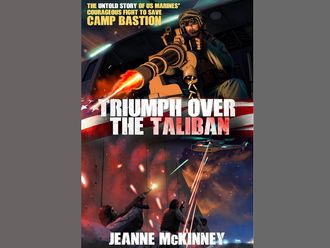_resources1_16a0851db67_medium.jpg)
How many of us paid attention in Geography class in school? Or History, for that matter? For most of us, it was just a lot of places and names and dates and mountains and rivers and seas that we would never saw.
Because — and this I can recall with complete certainty almost half a century later — we had absolutely no inkling, no hope, not even a bit of wishful thinking, that one day we would see many of those places, we would cross over those mountains and rivers and perhaps sail those seas, and we would stand on the grounds where great battles had taken place — not just in our country but in faraway nations.
So, it was only the chronically studious among us who actually paid attention, who understood what the teacher was going on about and who could picture events and places in the mind’s eye.
Even then, despite having the help of those blackboard-sized maps of the physical features of the world, we still got confused at exam time — and even more confused when we actually visited different parts of the globe and tried to bring our History and Geography lessons to life.
A recent trip to Uzbekistan was one such time for recalling those lessons from my schooldays.
There was first of all, the thrill of flying over the Himalayas — and wondering, as we crossed, whether we were over the Pamir Knot or the Khyber Pass and whether those jagged peaks were actually the Tien Shan mountains and that valley the Ferghana Valley from where the founder of the Mughal Empire came to India. One could keep guessing as we enjoyed a breathtaking view of the mountains that stretched on and on in all directions, sometimes snow-capped, sometimes stark and bleak, but always awe-inspiring.
There were also the rivers to consider. Imagine actually viewing from the air the eponymous Indus that gave my country India its name and the mighty Oxus that challenged Alexander the Great in his march to the East. Depleted of a lot of its water now, the Amu Darya (known to the Greeks as the Oxus) is still one of the greatest rivers of Central Asia. Both the Amu Darya and the Syr Darya sounded special to our ears all those years ago when we studied Central Asian geography in school, but now they had all come to life.
Equally exciting
Later, clacking over the Syr Darya in the bullet train from Tashkent to Samarkand was equally exciting, being at relatively close quarters and not just a guessing game from the air, where one could easily be wrong.
As always, visiting historical sites and hearing local tales from history was also a delight — and gave us plenty of food for thought: This is the place that was on the crossroads of the ancient Silk Road to China. This is the country that reveres the famed Temur.
What we got from our history books was the record of India and the Delhi Sultanate being attacked by an invader who left with elephant-loads of spoils. The person we heard about now was the great Amir who rebuilt Samarkand, made it his capital and a centre of culture and learning. He gave rise to the Temurid dynasty and Babur, the founder of the Mughal Empire in India, was his great-great-great grandson.
Even for short-haul travellers like us, history from another perspective opens up horizons we had not anticipated or even thought about. It does not whitewash anything, but it certainly makes for rumination — and a chance to bring decades-old classroom lessons to life.
Cheryl Rao is a journalist based in India.





_resources1_16a31069e4e_small.jpg)






